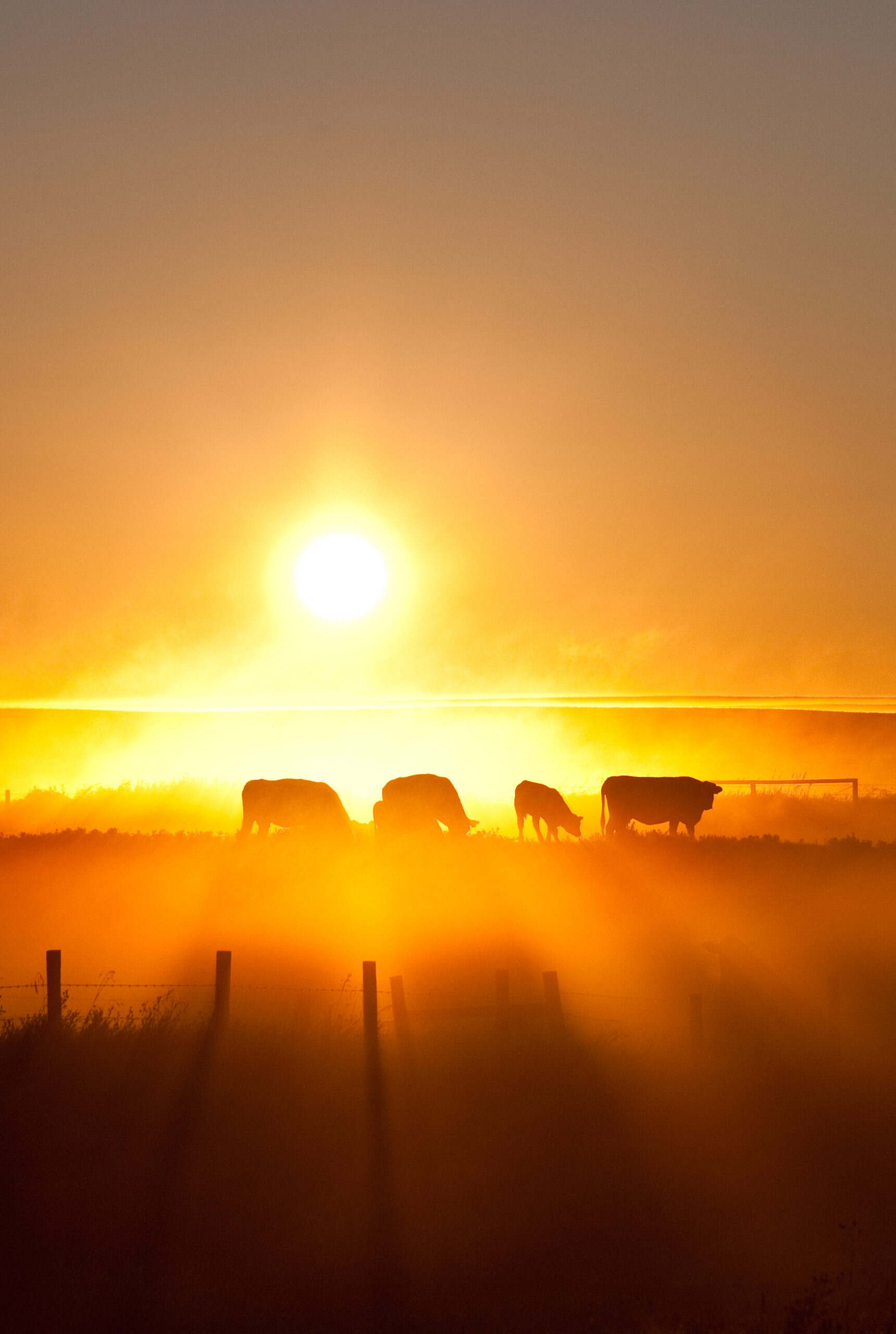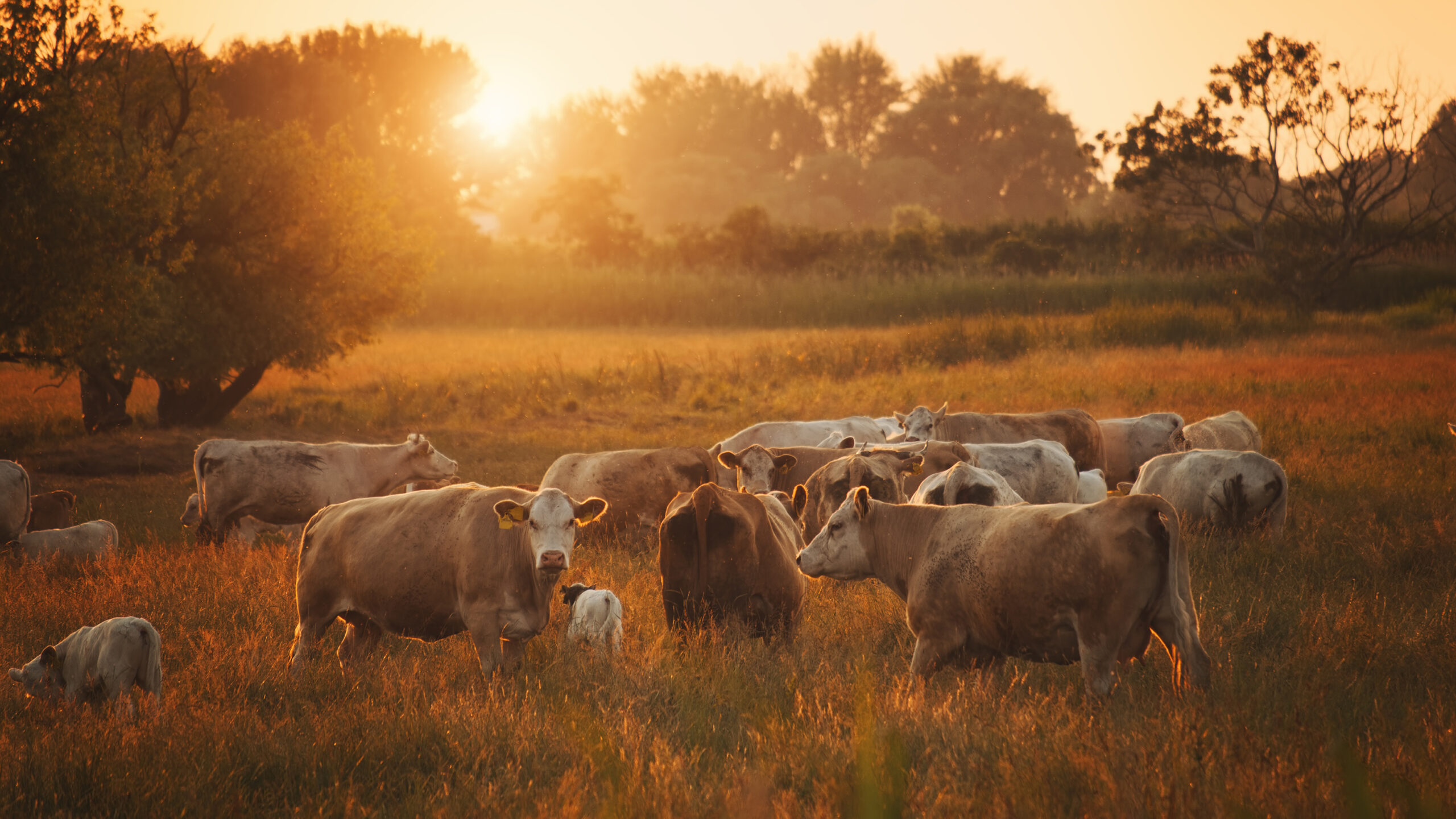The main purpose of winter supplements is to supplement the nutrients that the field can no longer provide, in order to optimize the utilization of the available pasture. It is therefore a common practice to supplement proteins as soon as the quality of the pasture starts to decline. However, what happens to breeding animals during the late winter and early spring when the quality of the pasture is not only poor, but the available amount of pasture also begins to decrease?
Introduction
The protein content of the natural pasture in grasslands starts to decrease rapidly at the end of the rainy season and it becomes necessary to supplement animals with protein. It is often started with a transition lick, after which the inclusion of protein sources is then increased as the quality of the grass decreases. A complete, high protein, winter lick is usually given after the first frost has occurred.
Late winter
Most beef cows are pregnant during the dry season (winter) so that they can calve in the spring and the cow can then raise her calf on good summer pasture. It is common practice to mate cows within 3 months after calving.
Conception and body condition are closely related and the closer a cow is to her target weight at the start of the calving season, the sooner she becomes pregnant and the earlier she calves in the following calving season. However, to be in good condition at the start of the mating season, it is important that cows calve in relatively good condition. However, body weight/condition losses of animals during winter are inevitable, especially during late winter. As the winter progresses, the available pasture starts to decrease and towards the end of the winter, beginning of spring, the quality of the pasture is at its lowest and a shortage of pasture causes the animals to now not only experience a protein deficiency, but also experiencing an energy deficiency. The energy needs of pregnant animals are high and exceed the energy supply of the field. It is then during this period when it becomes necessary to supplement energy along with the protein supplement in order to ensure that cows calve in relatively good condition.

Energy can be supplemented in two ways. The first is to move animals to better quality pasture and the second is to provide grains such as maize to the animals by means of a lick. Along with the maize, proteins, phosphate and trace minerals are also provided.
Phosphate supplementation during winter
The importance of phosphate in animal nutrition cannot be overemphasized. Phosphate is present in all body cells and is essential for various metabolic processes in the body. Although phosphate is primarily a wet season supplement, it must still be supplemented during the winter. Various researches have also shown that reproducing animals that did receive phosphate during the winter had a higher milk production and conception in the following summer. The following licks are balanced for all nutrients and can be given to animals during late winter:
Table 1 Maintenance lick for cows during the late winter when less grass, of a poor quality, is available.
| Kg/mixture | ||
| Raw Materials | 1 | 2 |
| Maize meal | 300 | 450 |
| Oilcake | 300 | 200 |
| Feed Grade Urea | 100 | 100 |
| Kimtrafos 12 Grandé | 75 | 100 |
| Kalori 3000 | 25 | 50 |
| Feed Grade Sulphur | 5 | 5 |
| Salt | 300 | 300 |
| TOTAL | 1105 | 1205 |
| Intake (g/cattle/day) | 500 – 600 | 600 – 700 |
Summary
The importance of winter supplements should never be underestimated. Urea-based protein supplements can be supplied to animals in early winter, but poor veld conditions often force us to switch to supplements that contain energy and natural protein to ensure that cows will calve in relatively good condition.










